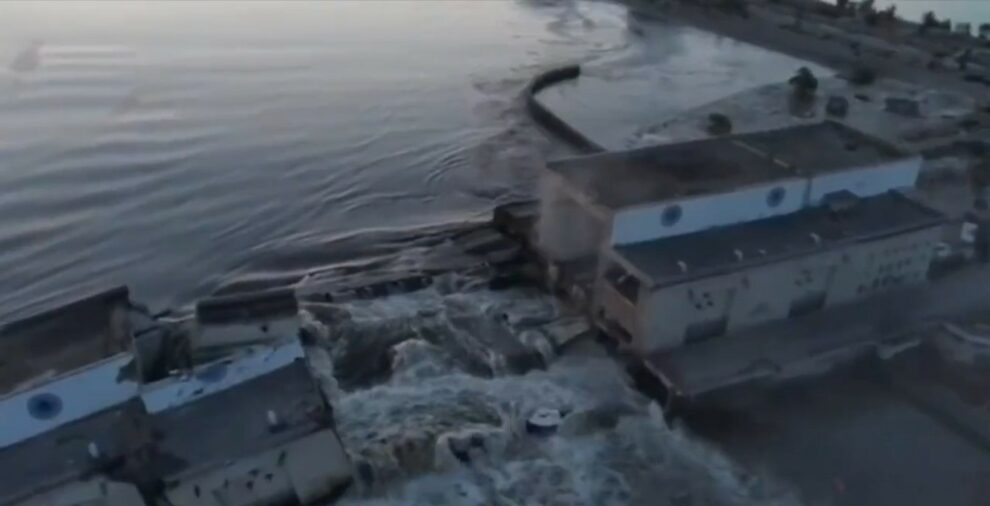Europe’s largest atomic power plant is still receiving water from a dam after it was breached in the fighting in Ukraine, the UN nuclear agency said Thursday, rejecting the dam operator’s claim it could no longer supply water.
“Ukraine’s Zaporizhzhia Nuclear Power Plant is continuing to pump cooling water from the Kakhovka reservoir,” the International Atomic Energy Agency (IAEA) said in a statement.
Earlier Thursday, dam operator Ukrhydroenergo’s chief executive Igor Syrota said the water level at the reservoir had gone “below the critical point of 12.7 metres (42 feet)”.
This means it could no longer supply “the ponds at the Zaporizhzhia nuclear power station to cool the plant”, he said on Ukrainian television.
The dam in southern Ukraine sits on the Dnipro river, forming a reservoir that provides the cooling water for the Russian-occupied Zaporizhzhia nuclear power station, some 150 kilometres (90 miles) upstream.
It was damaged on Tuesday.
Russia and Ukraine have accused each other of being behind the breach which both say was caused by an explosion.
The IAEA said in a statement its experts were informed that the plant had assessed after a review “that it should be able to pump water from the reservoir also after its level falls below 12.7 metres”.
“So far, the results indicate that the pumps can likely still be operated even if the level drops to around 11 metres or possibly lower,” the IAEA said.
The agency said the review included interviews with those “who have experience and expertise”.
“In these difficult and challenging circumstances, this is providing some more time before possibly switching to alternative water supplies,” IAEA head Rafael Grossi said.
Alternatives, which include a large cooling pond next to the plant, can provide the required cooling water for the plant “for several months,” Grossi said.
“Nevertheless, the general nuclear safety and security situation remains very precarious and potentially dangerous,” added Grossi, who plans to travel to the plant next week.
He said the extent of the damage remained unknown, and it was also not clear “when and at what level the reservoir will stabilise”.
The IAEA experts have requested access, including to the location where the reservoir’s water level is measured, to “independently verify the status of the systems that provide cooling water” to the plant, Grossi said.
The IAEA has a team of experts at the plant.
Plant staff have already implemented measures to limit the consumption of water, using it for only “essential nuclear-safety related activities”, Grossi said earlier.
The plant’s reactors have already been shut down, but they still need cooling water to ensure there is no nuclear disaster.
Grossi has repeatedly called for the protection of the plant as shelling has taken place near it and disrupted its crucial power supply.
